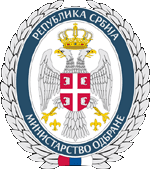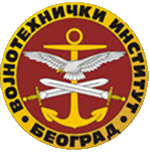|
REPUBLIC OF SERBIA MINISTRY OF DEFENCE
MINISTRY OF DEFENCE Material Resources Sector Defensive Technologies Department
|
VEGETATION EXTRACTION FROM SATELLITE AND AERIAL PHOTOGRAMMETRIC IMAGES USING MACHINE LEARNING ALGORITHMS
Military Geographical Institute, Belgrade, sinisa.drobnjak@vs.rs viktor Marković Military Geographical Institute, Belgrade, viktor_bre@yahoo.com Zoran Kričković Military Geographical Institute, Belgrade, zorankrickovic@gmail.com Ana Vučićević Military Geographical Institute, Belgrade, vucicevic.ana@outlook.com
Abstract: This article is connected with methods for automatic vegetation extraction using combination of multispectral satellite images and aerial photogrammetric images. Main goal of this paper is to suggest an optimal solution for easy mapping and updating vegetation areas on topographic maps. Vegetation areas are extracted on two ways: by visual interpretation and mapping using machine learning classification methods of satellite images and aerial photogrammetric images. Comparison of the results between these two approaches showed large geometric similarity. In this study, vegetation areas were extracted on the basis of the classification results acquired by machine learning algorithms approaches. Combination of SENTINEL-2A with 12 spectral bands satellite images and aerial photogrammetric images were used to carry out the image classification and ground sample data were collected from the available maps and personal knowledge. Machine learning classification algorithms were evaluated through ERDAS Imagine and R software. During the implementation, several different machine learning algorithms were tested for image segmentation and classification such as: Support Vector Machine - SVM, Random Forest - RF and Artificial Neural Network - ANN. Results obtained from vegetation classification process showed that the Random Forest approach gave the most accurate results (including higher producer`s and user`s accuracy for most of the vegetation classes) for vegetation extraction using satellite and aerial photogrammetric images. Average classification accuracies were typically around 90-95%. Keywords: Vegetation extraction, Machine learning algorithms, Support Vector Machine, Random Forest, Artificial Neural Network. |
|||||
|
||||||

